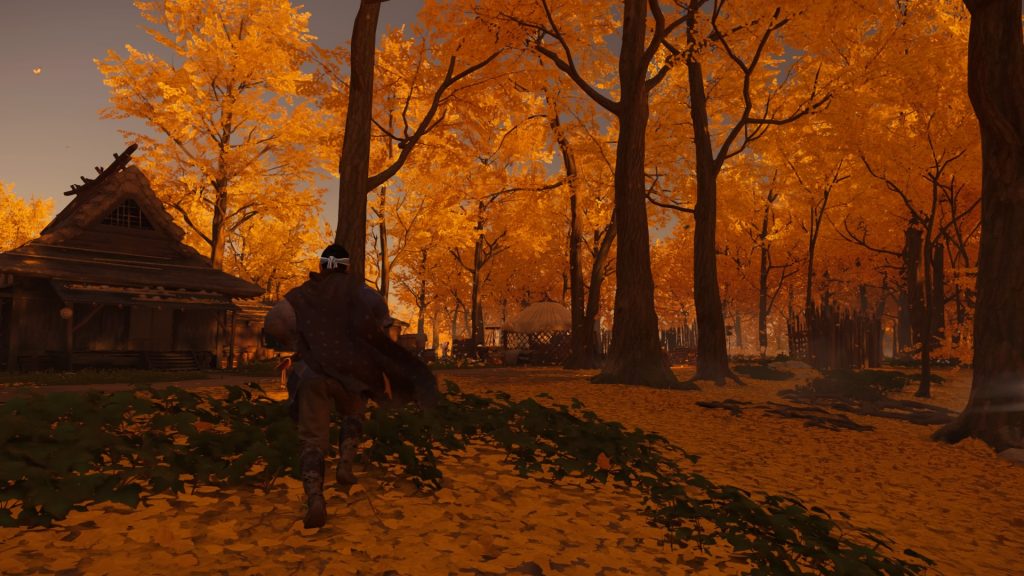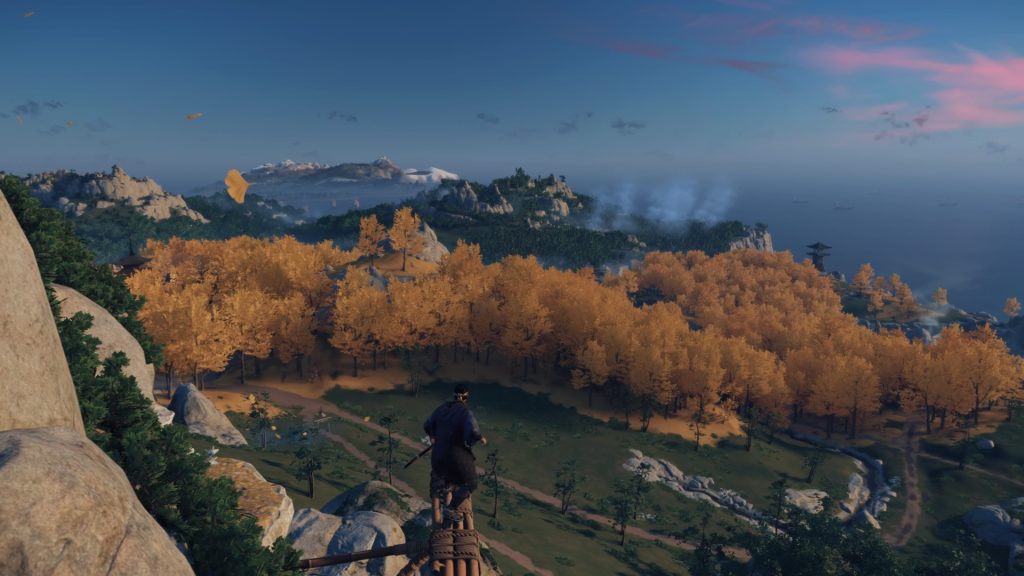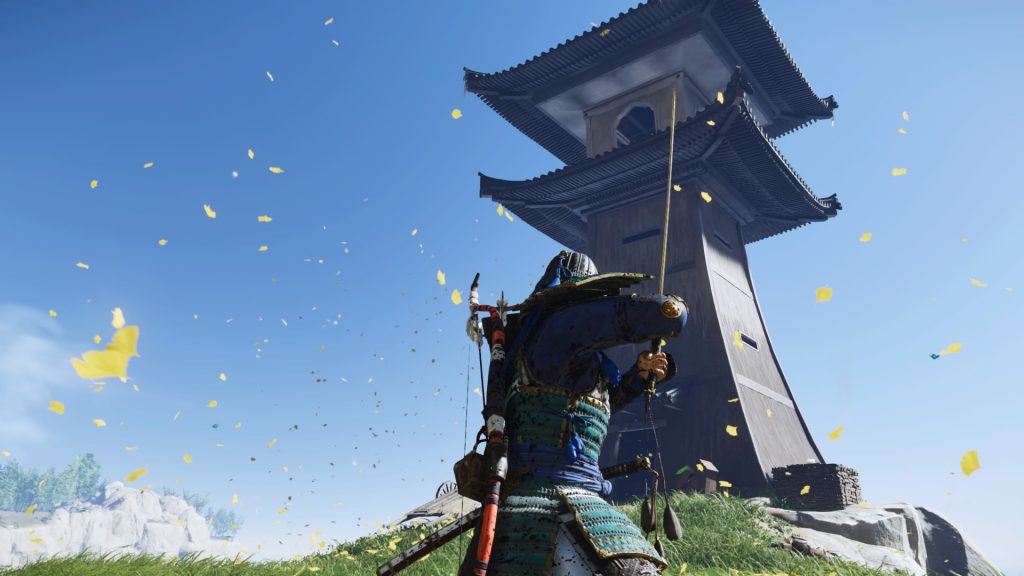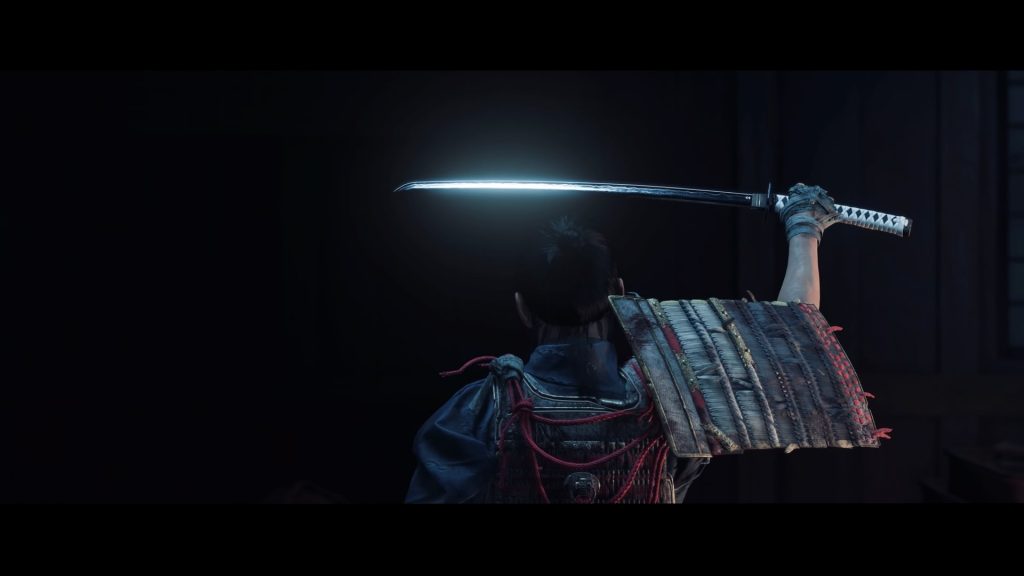Ghost of Tsushima, by producer Sucker Punch, released as an indispensable title for PlayStation 4
It's time for a generation of video games to end, then another to start. Like PlayStation 5 knocking door, the Playstation 4 it is consecrated as the best-selling video game device in its existence (since 2013), with more than 100 million units sold. Much of this success, undoubtedly, is due to the amount of exclusive high quality games that the platform had. AND Ghost of Tsushima one of those great titles.
After the incredible The Last of Us Part II, released on the 19th of June, Ghost of Tsushima arrives on PlayStation 4 as the last game exclusive to the console since, at least so far, there is no announcement by Sony of new games for this generation.
Developed by Sucker Punch Productions, which has in its curriculum the series InFamous, delivers a work with a lot of cultural content and an enviable technical excellence.
Tsushima in Feudal Japan
Ghost of Tsushima it takes place in a very specific period in the history of Japan. Although its history is fictitious, the setting takes place in the year 1274, the time of the Mongols' first invasion in the land of the rising sun. The island on which the events of the game unfold, including a real place, called Tsushima.
The game starts at the moment of the Mongol Empire's invasion of Japan. Jin, the protagonist, is part of an army of samurai who set out to defend their land. After the Mongols conquered the island of Tsushima, it is up to Jin to fight to seek justice for his people, as well as expel the invaders.
The first moments of Ghost of Tsushima follow a linear narrative and serve to teach the basic gameplay to the player. It doesn't take long before the map is all (or almost) available for the player to follow his path and explore it as he pleases. At this point, we can already see that the people at Sucker Punch took the lessons of other games of the genre as a lesson.
 The game screen is as clean as possible.
The game screen is as clean as possible.The game screen of Ghost of Tsushima the cleanest possible. Apart from the scenario, there is little information appearing. Out of combat, it is common that the player does not even see information such as life, the next objective or even a map. This leads to attention to elements of scenery, stimulating the player to change his route constantly to reach places that for some reason called attention. Something that The Legend of Zelda: Breath of the Wild did with mastery in 2017.
Just like in the Nintendo game, in Ghost of Tsushima the scenery is the best indicator of what is interesting to visit. Smoke seen on the horizon, animals that guide the player, trees or rock formations are points of interest and that almost always tell a story or improve the protagonist in some way.
 Points of interest appear in the distance on the horizon.
Points of interest appear in the distance on the horizon.The game's environment is a point worthy of praise. Tsushima Island seems alive, either in nature or in the presence of human characters. The characteristic vegetation of Japan, as well as the architecture, which refers not only to the place, but also to the period in which the game takes place.
Across the island, there are several camps or villages of Japanese survivors trying to survive and escape Mongol domination. There are also enemies that circulate around the island, causing terror to local residents, especially in areas where the player has not yet expelled the Mongols, something seen in the series Far cry, from Ubisoft. It is only in the villages, or saving people from the invaders, that Jin achieves secondary goals, which, in addition to granting rewards, tell a little about the history of each place.
Here is a criticism. While the history of Ghost of Tsushima Exciting and manages to hold the player’s attention, the secondary missions do not follow the same level. They are not bad, but they follow a basic structure of going to a place, killing some enemies and returning, which ends up not holding the player's attention for so long. Especially if you consider that the history of the game is short, but the number of secondary missions is enormous.
 The flute can be played to manipulate the climate on the island.
The flute can be played to manipulate the climate on the island.Either way, there is room for many hours of gambling, even for players who are in a hurry and don't like to explore.
Technical beauty
Ghost of Tsushima certainly one of the most beautiful games on the PlayStation 4, with emphasis on vegetation. Sucker Punch knew how to use Sony's platform capabilities well to bring the diverse environments that the game has to life. The island of Tsushima has the characteristic Japanese foliage, and the bright colors yellow, orange, blue, among others appear constantly in the trees, and the artistic direction makes it always pleasant to see the island's landscapes.
 There are several different scenarios in Ghost of Tsushima.
There are several different scenarios in Ghost of Tsushima.The game also provides two resources for appreciating its beauty. One of them the possibility of playing with a black and white filter, as if it were one of the famous director's films Akira Kurosawa, who became known for his samurai films. The filter, even, called Kurosawa Mode.
The other visual feature is photo mode. In it, several visual filters can be applied, as well as camera effects and even time manipulation and graphic effects. Players who understand photography will certainly have a good tool on hand for striking images.
The setting was such an important factor for Sucker Punch that it is possible to play the game completely in Japanese, after all, the story is set in Japan. always important to highlight, as a positive point, when games offer the opportunity to choose speech and subtitle languages individually and without being tied to the language of the video game. the case of Ghost of Tsushima, which also offers audio and subtitles in Brazilian Portuguese plus a welcome case of localization by Sony.
 The game is beautiful!
The game is beautiful!For the production of this analysis, the game was run on a model slim PlayStation 4 Pro. Although this is an end-of-generation game, which was designed to make good use of the processing capabilities of the PlayStation 4 Pro, Ghost of Tsushima it runs very well on previous models, with nothing that compromises the work experience.
No performance drops were noticed, even when several characters appear on the screen simultaneously, which is really impressive, given the level of graphic detail present in the game. Another factor that impresses is the loading screens, which are practically nonexistent in Ghost of Tsushima.
Once the game is loaded, the entire island is available to be explored, without any loading screens appearing. If the character dies, or the player performs the quick transport to another area of the map, the loading screen that appears so fast that it is difficult to read the tips that appear while the player waits.
 It is easy to stop to admire the nature of Ghost of Tsushima.
It is easy to stop to admire the nature of Ghost of Tsushima.Even playing on a platform that is not the most powerful available, no technical flaws were found in Ghost of Tsushima, and the result is a splendid game. It is worth mentioning, however, that the technical finesse has a price: to keep it at an acceptable temperature, the PlayStation 4 turns on its fans at maximum speed, which causes considerable noise in the environment.
Like a samurai
Ghost of Tsushima it has qualities to spare, but among them, the combat system stands out. Focused on samurai, the game goes deep into the fighting characteristics of the warriors of Feudal Japan. Battles against Mongol warriors take place from the beginning of the end of the game, and the attention given to this aspect impresses (positively).
Samurai are very well trained warriors who fight based on a code of honor that, for them, is extremely important. For example, they always face their enemies in face-to-face disputes, in which the most skilled warrior lives. However, at the very beginning of the game it is clear that Jin is unable to take his homeland back without leaving aside his code of honor.
 The honor code is very important for a samurai.
The honor code is very important for a samurai.Having to watch over the lives of his fellow citizens and protect his home, Jin finds himself forced to fight in the shadows, adopting a stealthy style and, often, stabbing his enemies in the back. Here comes the Ghost warrior (from English Ghost), present in the title of the game.
In this context, two aspects deserve to be commented. The first is the narrative impact that Ghost of Tsushima makes a point of showing. Right away, it is evident that the choice for the new fighting style does not please the protagonist, with emphasis on the protagonist's expressions, which make it clear that the hero's journey is not only an adventure of justice, but also a personal transformation. The character's discomfort aligns with the consequences of his decisions in the story.
The second aspect is the combat itself. Often, Jin runs into several Mongol warriors at the same time, and in order to beat them the player will have to combine the skills of the samurai and ghost styles.
 In Ghost of Tsushima, Mongol warriors are everywhere.
In Ghost of Tsushima, Mongol warriors are everywhere.Ghost of Tsushima It is not an easy game, as Jin does not need to take many blows to be defeated. The path of victory, therefore, requires precise movements of the player, who needs to hit (much) more than to miss. The protagonist's animations were very well programmed, made to resemble samurai films. The result is combats that look more like a dance.
As he progresses through the various areas of Tsushima Island, and consequently conquers territories, Jin gradually unblocked new skills. Advances in gameplay range from samurai stances, which are effective against different types of enemies, to the use of phantom items, such as smoke bombs for dispersal or explosives for damage.
 One of the samurai's fighting stances.
One of the samurai's fighting stances.At any time during battles, the player can choose a stealth or direct combat approach, in other words, between using samurai or ghost skills. There are no positive or negative consequences for the player's choices, just different styles.
The attention to detail is such that each cut made with the blades generates a portion of blood on the combatants and on the ground, and at the end of each fight the terrain is quite marked. This, added to the violence of the game, Ghost of Tsushima be a game not recommended for children under 18.
 It is common for the floor to become soiled with blood after fighting.
It is common for the floor to become soiled with blood after fighting.Structure (not to) precise
As we already talked about in this text, Ghost of Tsushima it has a considerable number of secondary missions, however the main story is not so long. This implies that players who prioritize secondary objectives end up unlocking almost all of Jin's improvements without having delved into the story, which considerably reduces the overall difficulty level of the game.
Fortunately, there are several categories of improvement present in Ghost of Tsushima. During the game, the player will unlock new ghost weapons, abilities, as well as receive various clothes, each with its own combat advantages. As the player performs the tasks, his achievements gain fame and Jin gradually becomes a legend on the island, which guarantees skill points that must be spent on the character's evolution. Fortunately, there is a constant sense of progress, which excites the player to continue the adventure.
 Tsushima Island changes its climate according to the time of day.
Tsushima Island changes its climate according to the time of day.The missions of the main story are varied, with different styles of gameplay. The secondary school girls, in turn, generally follow the same structure: with the excuse of helping some inhabitant of the island of Tsushima, Jin must go to a place where there are some Mongols and kill them. Were it not for the skill system, secondary missions would tire quickly.
Another point that deserves to be highlighted is that, when taking points controlled by Mongols, optional objectives appear, that if accomplished, they grant special bonuses, as seen repeatedly in the series Assassins Creed.
Mandatory exclusive
Ghost of Tsushima, Sony's latest major release for the Playstation 4, masterfully closes an excellent collection of exclusive console games, on the market since 2013. Indispensable for those who like action games, cinematic scenes and a good dose of Feudal Japan culture, the game is a meeting of the best in the genre in the video game industry.
In short, it is an incredible and mandatory game.
 Ghost of Tsushima is a game as sharp as a samurai sword.
Ghost of Tsushima is a game as sharp as a samurai sword.Also take the time to check out our video review on the Showmetech channel on YouTube:
- Visuals – 10/10
- Sound – 10/10
- Gameplay – 9/10
- History – 9/10
9.5 / 10
Summary
Ghost of Tsushima delves into the Japanese culture of the feudal era and opens up the difficult decisions of a samurai who, in order to seek justice, must face the consequences of putting his needs before honor.
Pros
- Impressive visuals;
- Fast loading screens;
- Combat with precise movements.
